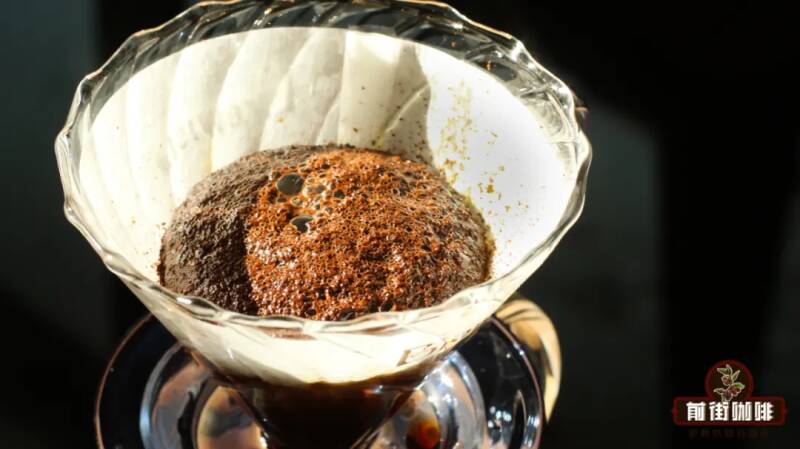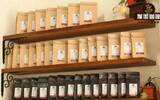Will coffee be extracted insufficient if steaming for too long? What is the purpose of steaming coffee? How long does it take to steam hand-brewed coffee? How much hot water does it take to inject into steaming? Does it have to take 30 seconds to steam co
Recently, a friend read this post on the Internet: "If you steam for too long, it will easily rush out of insufficiently extracted coffee."

Obviously, this statement violates our long-standing understanding of stuffy steam. Because as we all know, the purpose of steaming is to expel carbon dioxide from coffee powder, allowing us to more easily dissolve the flavor substances in coffee powder. Simply put, it is a step that can increase the extraction rate. Especially for coffee with higher freshness, the longer steaming time will help to expel more gases that hinder extraction. Therefore, in theory, the extraction rate should be further increased. How can it lead to insufficient extraction?

So this friend came to the store with doubts and asked about the truth about what happened on Qianjie! According to this friend, there are two highly credible explanations he saw from these posts: one is that too long steaming time will cause the water temperature in the pot to drop, and the decrease in the water temperature will affect the extraction efficiency, resulting in the possibility of insufficient extraction; the other is that because all carbon dioxide has been exhausted, the water discharge rate will be much faster. The contact time between coffee and water is reduced, which in turn leads to a reduction in extraction efficiency, making coffee prone to insufficient extraction.
So is this really the case? Let Qianjie verify it through a set of experiments today!
The content of the brewing comparison experiment is very simple. Qianjie will use different steaming times to brew two pots of coffee, and then measure and compare their taste and extraction rate to see if the extraction rate will really decrease. But if you are a friend who often reads Qianjie's tweets, you should know that Qianjie just shared an article about the difference between steaming for 30 seconds and steaming for 60 seconds. In that article, Qianjiechong brewed three sets of coffees for comparison. Although the beans used in the three groups were different in terms of roasting degree and freshness, the results were without exception. The coffee group with a long steaming time had a higher extraction rate than the coffee group with a short steaming time.
Then some friends may think that this is the result of not having a big enough difference in steaming time. So today, Qianjie will further widen the gap in steaming time, using a 30-second steaming time to compare it with a 1 minute and 30-second steaming time (any longer is unnecessary). Let's see if the truth is true as rumored. If the steaming time is too long, the extraction rate will decrease! The coffee beans selected for Qianjie in this experiment are Qianjie Yejia Shefei Guodin in the Qianjie bean list. It has been 10 days since the roasting was completed. It is in the best taste period while retaining a certain amount of carbon dioxide can well demonstrate the impact of different steaming times on coffee. The extraction parameters are as follows: powder amount used: 15.6g Water amount used: 225ml Grinding degree: 80% sieving rate of No. 20 sieve Bushing water temperature: 92°C Bushing method: three-stage
The brewing process is skipped. Except for the time and steaming time, the other steps and parameters are all similar. Let's look at the results directly. In terms of taste, the fruit tinkling that has been steamed for 30 seconds has a very excellent performance. It has a very balanced taste, a smooth taste, a prominent flavor, with the aroma of white flowers, lemon and berries, and a long aftertaste; while the fruit tinkling that has been steamed for 1 minute and 30 seconds is as expected by Qianjie. It will be better (a little bit) than the fruit tinkling that has been steamed for 30 seconds. Although the difference is not big, its flavor will be more prominent (a little bit) and its flavor will be fuller (a little bit).
By measuring the extraction rate, Qianjie verified this fact. The concentration of fruit tinsel after steaming for 30 seconds was 1.48%, and the extraction rate was 19.46%; while the concentration of fruit tinsel after steaming for 1 minute and 30 seconds was 1.53%, and the extraction rate was 20.13%, which was slightly higher than the former. Then Qianjie also measured the drainage speed and water temperature during brewing. The result was that the drainage speed was the same. The two sections of hot water injected later flowed out in the same time, and the speed was not accelerated due to too much exhaust. Similarly, the water temperature in the two pots of coffee was the same, both at 92.6°C. When the second stage of water was filled, their water temperatures were 91.4°C (30 seconds) and 90.9°C (1 minute and 30 seconds) respectively. It can be seen that although the steaming time differs by one minute, the temperature difference is only 0.5°C, so it will not have much impact on the extraction.
From these results, we can see that the extraction rate has not decreased with the increase of time. On the contrary, the extraction rate has also increased slightly. So, the conclusion is that too long steaming time will not lead to insufficient extraction? Not really. In some specific circumstances, too long steaming does have a chance of causing insufficient extraction of coffee, but these conditions are usually extreme. For example, the steaming time is longer than this one and a half minutes, the ambient temperature is lower than now, or the thermal insulation performance of the hand-flushed pot is not so high, etc. Then under these circumstances, the water temperature after steaming will be much lower than the preset one, which will lead to the extraction efficiency being not so high, and the final extraction rate of the coffee will be lower than that after steaming for 30 seconds.
However, this just makes the coffee extraction rate lower than when steaming for 30 seconds, not insufficient extraction. You can deduce the extraction rate measured in front of the street. Even if there is a difference, the difference will not be so large that the coffee will be under-extracted. If there is really an under-extracted situation, then in addition to steaming time. In addition to being too long, the high probability is that the original brewing parameters themselves do not sufficiently extract the coffee, so if the water temperature is slightly lower, the coffee will be prone to under-extracted.
To sum up, we can know that steaming for too long does have an impact on the extraction rate of coffee, but whether this impact is good or bad must be judged based on the specific situation.
- END -
Important Notice :
前街咖啡 FrontStreet Coffee has moved to new addredd:
FrontStreet Coffee Address: 315,Donghua East Road,GuangZhou
Tel:020 38364473
- Prev

Employees break defense! Guming pistachio milk turns into an "morning shift nightmare"?
▲ Click to pay attention| Daily Boutique Coffee Culture Magazine Coffee Factory During the holidays, sales of most chain tea brands will increase. Stores opened in crowded places may also experience explosive orders, making milk tea workers busy. And every time at this time, if the ingredients for the drink are exhausted,
- Next

Do frozen coffee beans need to be thawed? Are frozen coffee beans really useful? How long does it take to defrost frozen coffee beans? Will frozen coffee beans affect flavor? Can hand-brewed coffee beans be stored frozen?
Freezing is a very popular way to "preserve" coffee beans in recent years. Just seal the coffee beans and throw them into the freezer of the refrigerator, and the loss of flavor of the coffee will be slowed down and the taste period will be extended. Many friends use this method to hoard and buy them at the front street discount event
Related
- Starbucks employees in 10 countries will hold protests in support of the US strike!
- Some people are happy and others are sad! Lucky wants to fully launch ovens?!
- Stop business for rectification! Jasmine milk white clerk deliberately did not pack and let the rider wait!
- Ridiculous! Tims pressured the federal government to relax the entry of foreign workers?!
- How to judge the brewing method by the state of the powder bed? How to break out of a deep hole with hand-brewed coffee?
- Detailed explanation of the proportion of gold gouache in hand-brewed coffee? What are the Gold Cup Guidelines?
- What is the difference between the gold label rose summer and the red label rose summer in Guixia Village? Are Rose Summer 1931 and Gori Rose Summer?
- Cudi stores ban other brands of coffee?! Netizen: No problem
- Is it better to make coffee cold or hot? Why is it recommended to drink hot coffee?
- Lucky people collapsed! The store ceiling is full of AI surveillance cameras?!

